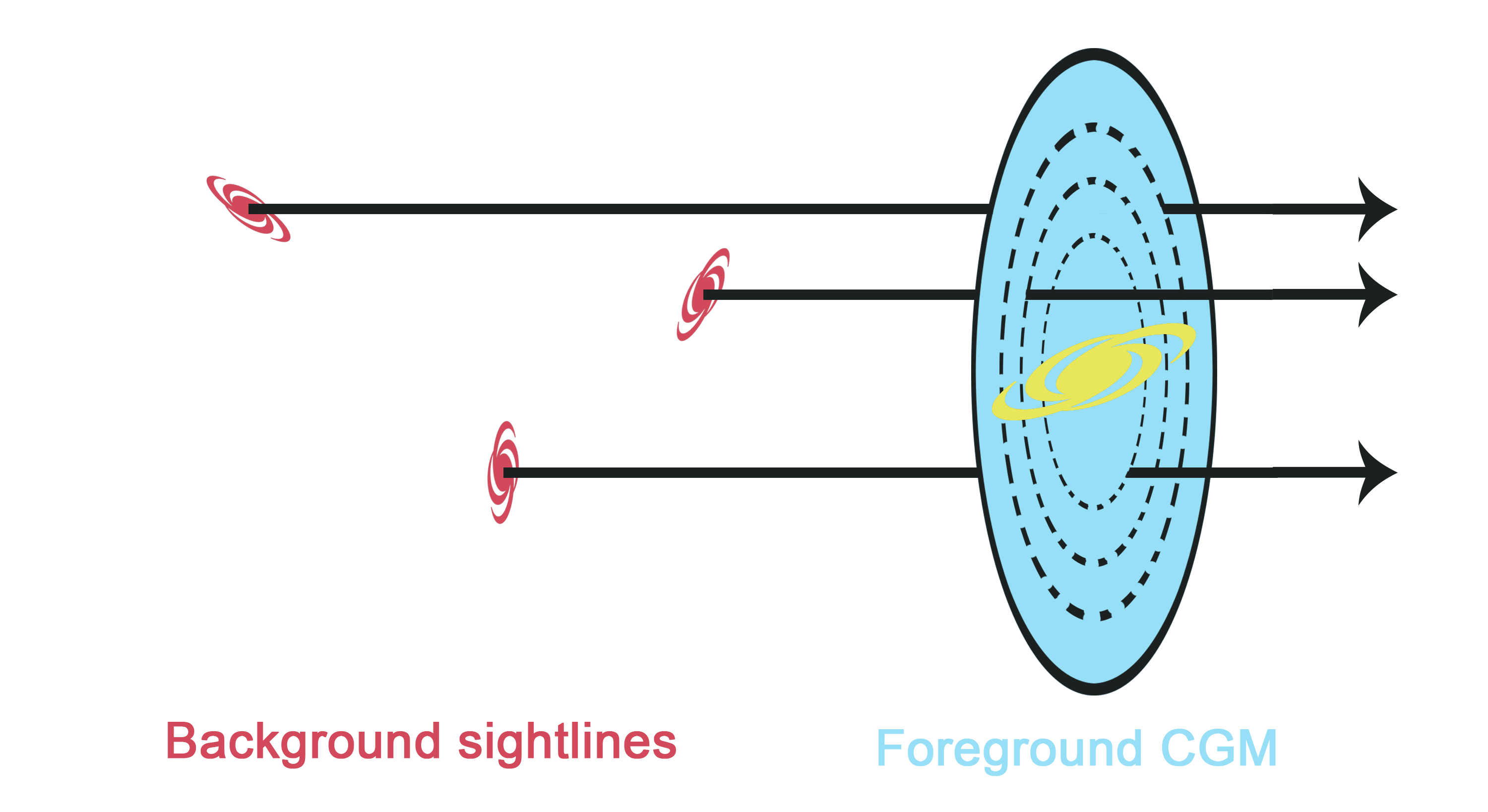Research
Circumgalactic Medium at Redshift-2


How does gas move in the CGM? Can we tell the difference between inflow and outflow?
These are the key questions that we are trying to investigate in Y.Chen+2020 (in prep), and we think that we have answers, at least to galaxies at z~2. By utilizing >3,000 spectroscopically confirmed galaxies in the Keck Baryonic Structure Survey (KBSS), we assembled the KBSS Galaxy Pair Sample. This sample consists of >200,000 galaxy pairs, offering an incrediblly dense spatial sampling from background galaxy sightlines. This allowed us to resolve the detailed kinematics of neutral hydrogen in absorption in CGM. This paper is going to be submitted very soon, so stay tuned!
In the near future, we are also planning to use this galaxy pair sample to probe other ion species, further constraining the physical conditions of gas in CGM. Meanwhile, I am very involved in the KBSS-KCWI survey, which uses the highly sensitive integral field spectrograph, Keck Cosmic Web Imager, on the Keck-II telescope. By looking at neutral hydrogen around the same galaxies in both absorption and emission, we are hoping to constrain the structure and radiative transfer of HI. Erb+2018, and Law+2018 offered some teasers of this project.
Past Projects
SDSS Reverberation Mapping
Reverberation mapping is one of the direct ways to measure the mass of distant supermassive blackholes. I was in charge of obtaining and initial data reduction of broad-band photometric data from the Bok telescope.
Time-Domain Analysis of TW Hydra
TW Hydra is one of the most well-known classical T Tauri stars -- progenitors of the Sun. I analyzed its high-resolution optical spectra in the time domain, to unveil its typical accretion time scale.
